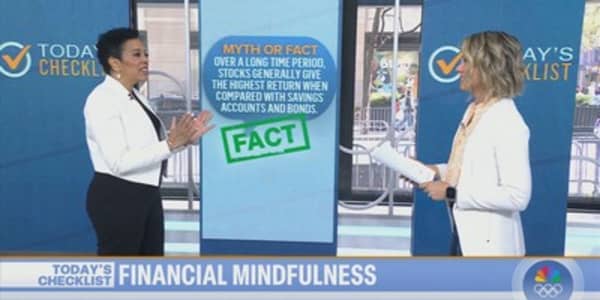
That surprise bonus or other unexpected income you earned last year may come back to bite you this year.
As tax filers pull together their forms and prepare to meet with their accountants, they are getting a better idea of how much they really earned in 2016.
Some filers are also finding out that their higher-than-expected income may require them to claw back the contributions they made to Roth individual retirement accounts last year, as well as the earnings, or else they'll have to pay excise taxes.
"You got a big bonus at the end of the year or you've just gotten married, and you're not aware of how high your income is," said Jeffrey Levine, chief retirement strategist at Ed Slott & Co. in Rockville Centre, New York. "It's a hot button for mistakes on Roth IRA contributions."
If you want to fix this issue quickly and easily, do it before you file.
Too much of a good thing
You are allowed to contribute up to $5,500 in total to all of your traditional and Roth IRAs, plus $1,000 if you're age 50 and over.
There is a catch, however.
How much you can save in a Roth IRA is based on your filing status and your modified adjusted gross income — that is, your adjusted gross income on your Form 1040, plus certain deductions that you take. This restriction applies only to Roth IRAs, not traditional IRAs.
See the chart below for more details.
Taxpayers may find that they inadvertently contributed too much to their Roth IRAs during the year if they end up with more income than they expected.
This is especially the case for those with large bonuses at the end of the year or self-employed people who don't do a great job of bookkeeping. The discovery comes around tax time, as accountants get a clearer view of clients' income.
"You thought your income would be low enough that you'd qualify for the Roth contribution and now you have to undo it," said Tim Steffen, director of financial planning at Robert W. Baird. "This is when the skeletons come out of the closet."
Taxes and fixes
If you leave the excess contribution and earnings in the account, you'll begin racking up excise taxes to the tune of 6 percent per year until you rectify the issue. You'll also have to file Form 5329 to report the outsized contribution or else face penalties.
"Form 5329 is considered its own tax return, so the IRS can hit you with a failure to file penalty, plus accuracy-related penalties," said Levine.
Ideally, you'll want to address the excess contributions, plus earnings, before the due date of your tax return — April 18 this year.
If you merely withdraw the money from the Roth IRA, your earnings will be taxable on your 2016 return, even if you're pulling the cash this year, said Steffen. This means that if you've filed early and you take out the excess contribution afterward, you may have to file an amended return to account for these earnings.
You'll also be subject to the 10 percent early withdrawal penalty if you're under age 59½.
An alternative would be to recharacterize the excess contribution and earnings so that it's a traditional IRA contribution.
"If you thought you'd qualify for a Roth contribution and you didn't, you probably won't qualify for a traditional deductible IRA contribution," Steffen said.
In this case, you'll have until Oct. 15 to recharacterize money you contributed last year. To simplify the process, be sure to contact the firm that's holding your Roth IRA and request the recharacterization.
"Recharacterization is the last resort if your filing deadline has come and gone, and you've made an excess contribution," Steffen said. "You can avoid the penalty, but the money has to go to a different IRA."






